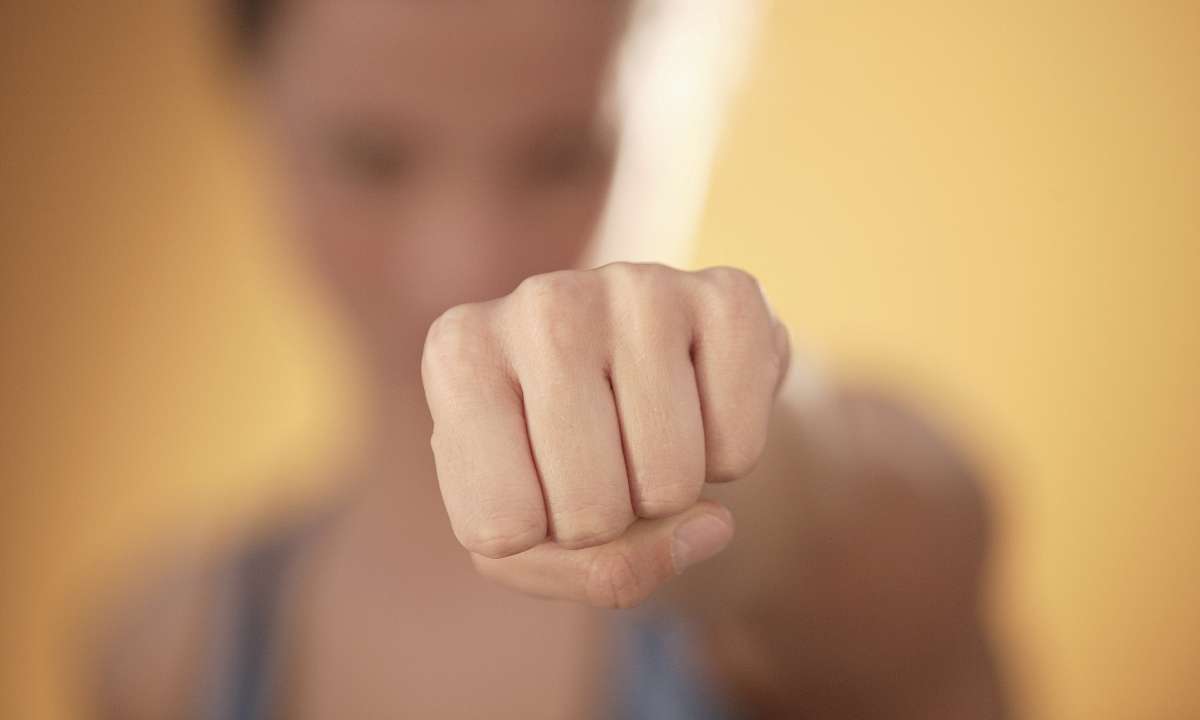“Does Punching the Solar Plexus Work?”
The solar plexus, located in the upper abdomen, is a network of nerves that control several bodily functions, including digestion and respiration. It is also a target area in many martial arts and self-defense techniques, with the belief that a well-placed punch can incapacitate an opponent. But does punching the solar plexus really work, or is it just a myth?
In this article, we’ll take a closer look at the solar plexus, its functions, and the effects of punching it. We’ll also examine the scientific evidence and expert opinions to determine if punching the solar plexus is an effective self-defense technique.
Does Punching the Solar Plexus Work?
Yes, punching or kicking the solar plexus can be an effective self-defense technique as it can cause the opponent to lose their breath and become temporarily incapacitated. The solar plexus is a vulnerable area located between the bottom of the sternum and the top of the stomach, making it a target for self-defense.
However, it is important to note that relying solely on punching the solar plexus may not always be effective, and other techniques such as targeting the groin or striking the nose or eyes may be more practical.

Understanding the Solar Plexus
Before we dive into the effects of punching the solar plexus, let’s first understand what it is and its functions. The solar plexus is a cluster of nerves located behind the stomach and in front of the aorta. It is part of the autonomic nervous system, which controls involuntary bodily functions such as breathing, heartbeat, and digestion.
The solar plexus receives input from the sympathetic and parasympathetic nervous systems. The sympathetic nervous system is responsible for the fight or flight response, which triggers the body’s adrenaline and prepares it for action. The parasympathetic nervous system, on the other hand, promotes rest and relaxation and helps the body conserve energy.
In addition to its role in the autonomic nervous system, the solar plexus is also associated with the third chakra in Eastern spiritual practices. This chakra is believed to be the center of personal power, self-esteem, and confidence.
Solar Plexus Crystals: 11 Healing Chakra Stones You Need
The Effects of Punching the Solar Plexus
Now that we have a better understanding of the solar plexus, let’s explore the effects of punching it. Proponents of punching the solar plexus believe that a well-placed strike can cause a range of effects, from mild discomfort to incapacitation.
One theory is that a punch to the solar plexus can cause the diaphragm to spasm, which can lead to difficulty breathing and even temporary paralysis of the respiratory muscles. Another theory is that the impact can stimulate the vagus nerve, which can cause a sudden drop in heart rate and blood pressure, leading to fainting or even cardiac arrest.
However, these theories are largely based on anecdotal evidence and have not been scientifically proven. In fact, there is little scientific research on the effects of punching the solar plexus, and most of what is available is conflicting.
A study published in the Journal of Bodywork and Movement Therapies found that pressure applied to the solar plexus can cause a range of effects, including pain, discomfort, and changes in heart rate and blood pressure. However, the study did not investigate the effects of a punch specifically.
Another study published in the Journal of Sports Science and Medicine found that a punch to the solar plexus can cause a decrease in heart rate and blood pressure, but the effect was not significant enough to cause fainting or cardiac arrest.
Expert Opinions
To get a better understanding of whether punching the solar plexus is an effective self-defense technique, we turned to martial arts experts and self-defense instructors.
According to Grandmaster Rick Hall, a ninth-degree black belt in Taekwondo and the founder of the American Martial Arts Institute, punching the solar plexus can be effective if done correctly.
“When you punch the solar plexus, you’re hitting a nerve center that controls breathing and can cause the diaphragm to spasm,” Hall says. “If you hit it hard enough, it can knock the wind out of your opponent and give you an opportunity to escape or subdue them.”
However, Hall cautions that punching the solar plexus is not a guaranteed knockout and should not be relied upon as the sole self-defense technique.
Similarly, self-defense instructor and former police officer Jim Wagner believes that punching the solar plexus can be effective, but only in certain situations.
“If you’re in a fight and you have an opportunity to hit the solar plexus, go for it,” Wagner says. “But it’s not something you should rely on. In a real-life self-defense situation, you need to be prepared to use a variety of techniques to protect yourself.”
Wagner also notes that punching the solar plexus may not be effective against certain opponents, such as those who are under the influence of drugs or alcohol.
Alternatives to Punching the Solar Plexus
While punching the solar plexus may be a viable self-defense technique in some situations, there are other techniques that may be more effective or practical.
One alternative is targeting the groin area, which can cause intense pain and temporarily incapacitate an opponent. Another technique is striking the nose or eyes, which can cause pain and disorientation.
In addition to physical techniques, self-defense experts also stress the importance of situational awareness, verbal de-escalation, and avoidance strategies.
Key Takeaways
In conclusion, punching the solar plexus can be an effective self-defense technique in some situations, but it is not a guaranteed knockout and should not be relied upon as the sole technique. The effects of punching the solar plexus are largely based on anecdotal evidence and have not been scientifically proven. There are also alternative techniques, such as targeting the groin area or striking the nose or eyes, that may be more effective or practical. Ultimately, self-defense experts stress the importance of situational awareness, verbal de-escalation, and avoidance strategies as the first line of defense.



